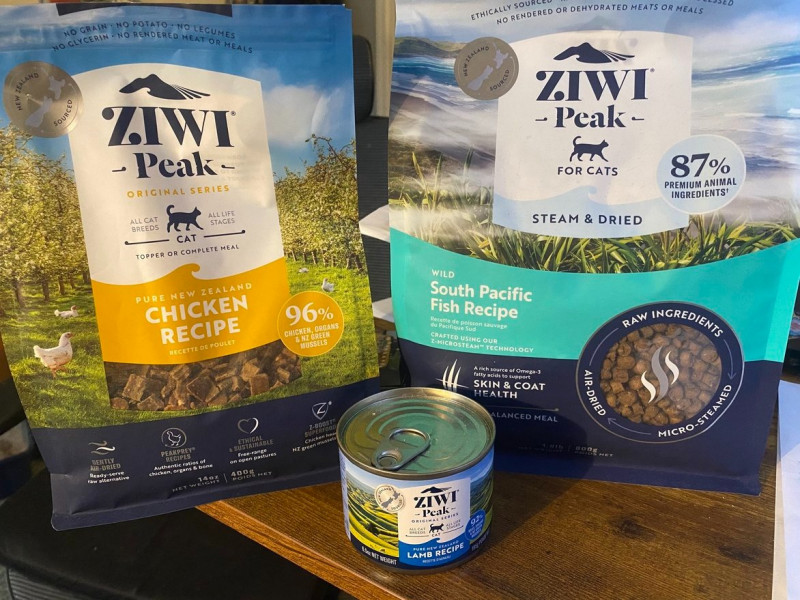This is a sponsored guest post. All opinions are my own.
If you’re like most dog parents, your pup isn’t just a pet—they’re family. And just like any family member, you want them to live their best, tail-wagging life. That journey starts with what’s in their bowl. In a world full of pet food options, knowing how to choose the right nutrition can feel overwhelming. But with a bit of guidance, you can confidently feed your furry friend food that supports their health, energy, and happiness.
It’s no surprise that more pet owners are choosing to shop dry dog food as a convenient and reliable option for balanced nutrition. It stores well, comes in a variety of formulas for different life stages, and can meet your pup’s daily needs without sacrificing quality. But beyond convenience, what really matters is what’s inside—and how it makes your dog feel.
Why Smart Nutrition Matters More Than Ever
Today’s pet parents are better informed than ever before. Most of us read labels, verify ingredients, and care deeply about the source of our dog’s food. This change in behavior is not just a fad—it’s an indicator of just how much we care about our dogs’ welfare.
Poor nutrition, vets say, can result in problems such as obesity, dull coat, digestive issues, or even mood swings in our dogs. Conversely, good nutrition promotes healthy bones, shiny coat, healthy digestion, and enhanced energy. It’s not merely a matter of staying well—it’s about granting our dogs the quality of life they deserve.
The Building Blocks of a Balanced Diet
Similar to humans, dogs require a well-balanced combination of protein, healthy fat, carbohydrates, vitamins, and minerals to stay healthy. Muscle growth and overall growth require protein, so it’s critical to select dog food that includes real meat—chicken, beef, or salmon—as the first ingredient. Healthy fats are another important ingredient; not only do they nourish skin and coat, but they also supply the energy your dog requires to remain active and playful. Omega-3 and Omega-6 fatty acids are particularly useful in this respect.
Carbohydrates are a main source of energy. Rather than filler ingredients such as cornmeal, use whole food sources such as brown rice, sweet potatoes, or barley, which are more easily digested and provide more nutritional value. Vitamins and minerals complete the diet by sustaining everything from immune function to bone health. The proper balance will depend on your dog’s age, size, and activity level.
When you go shopping for dog food, pause and scan the label for these important ingredients. Opt for formulas with ingredients you can pronounce—because if you wouldn’t eat it, why feed it to your dog?
Real Pet Parent Tip: Watch for Food Reactions
At other times, your dog will say more than the label ever would. Is your pup scratching excessively? Is their stool abnormal, or are they finicky at dinner time? These may be subtle hints that their food isn’t a good match.
Changing to a good-quality dry dog food can make a big difference. I once changed brands for my Labrador after weeks of scratching and lethargy. Within days, she was back chasing squirrels and begging for belly rubs. Each dog is different, and sometimes it takes a little trial and error to get it right.
Puppies, Adults, and Seniors: Nutritional Needs by Age
Selecting the proper chow for your dog isn’t merely a matter of selecting a brand or type—it’s also a matter of knowing their stage of life. Puppies, for instance, require more calories, protein, and fat to fuel their intensive growth and development in those early months. Once dogs reach adulthood, their needs change to building health and energy without overeating, which translates to weight gain. Older dogs, however, tend to thrive on lower-calorie food with added nutrients to support aging joints like glucosamine. Luckily, most pet food manufacturers label their foods clearly by life stage, so it is simple for pet parents to find the correct formula specific to their dog’s needs.
Don’t Fall for the Marketing Alone
Let’s face it—some bags look fancier than others. Buzzwords like “natural,” “premium,” or “vet-approved” are everywhere, but they don’t always mean what you think. Instead of buying into the hype, dig into the guaranteed analysis and ingredient list.
What really matters is whether the food meets AAFCO (Association of American Feed Control Officials) standards. This ensures your dog’s food provides complete and balanced nutrition. Look for that label before you make a decision.
Small Breed? Large Breed? Choose Accordingly
Your dog’s size plays an important role in determining which type of food is best suited for them. Small breeds often require more calories per pound to keep up with their fast metabolism, and they benefit from smaller kibble that’s easier to chew and digest. In contrast, large breeds may need fewer calories overall but require formulas that provide extra support for joint and bone health, helping to prevent issues like hip dysplasia. Many dry dog food options are specially formulated to meet the unique needs of different breed sizes, making it easier to choose a diet that supports your dog’s health while helping to avoid overfeeding or nutritional imbalances.
A Note on Hydration
Dry dog food is convenient, but it contains less moisture than wet food. Always make sure your dog has access to fresh, clean water—especially if they’re active. You can even mix a bit of warm water into their kibble to soften it and enhance flavor, particularly for picky eaters or seniors.
Trust Your Vet (and Your Gut)
At the end of the day, nobody knows your dog like you do—but your vet knows nutrition. Regular check-ups and open conversations about diet can go a long way. Whether your dog has allergies, sensitivities, or unique health needs, your vet can help you interpret labels and guide your choices.
Combine that with your own observations, and you’ll be on your way to giving your dog the best life possible—one bowl at a time.
It’s About Love in Every Bite
Feeding your dog isn’t just a daily routine—it’s an act of love. When you take the time to buy dog foods that’s nutritious, age-appropriate, and tailored to your pup’s needs, you’re investing in more than just their health. You’re giving them the energy to play, the strength to explore, and the glow of a happy, well-fed life.
So next time you pour that kibble into the bowl, know this: you’re doing something right. And your dog? They know it too—with every wag, every lick, and every joyful bark.

Hi there! I am Emily Evert, the owner of Emily Reviews. I am 28 and live in a small town in Michigan with my boyfriend Ryan and our two pugs. I have a large family and I adore my nieces and nephews. I love reading memoirs, and learning about child development and psychology. I love watching The Game of Thrones, Teen Mom, Sister Wives and Veep. I like listening to Jason Isbell, John Prine, and other alt-country or Americana music. I created Emily Reviews as a creative outlet to share my life and the products that I love with others.
This post currently has no responses.












Leave a Reply